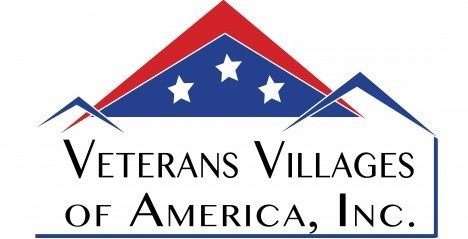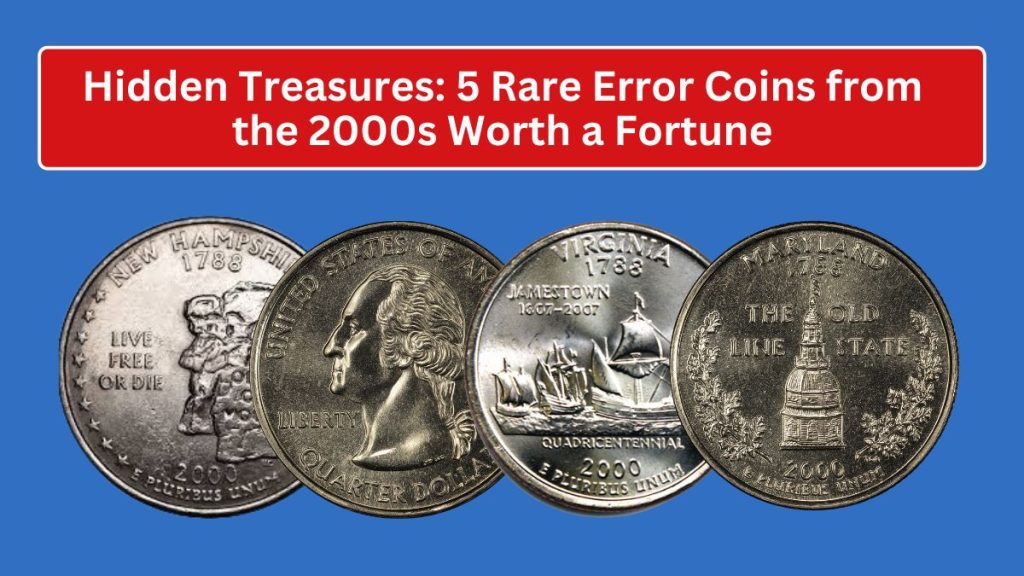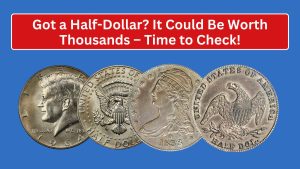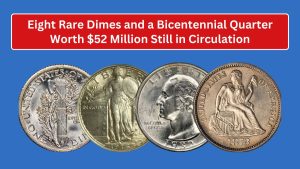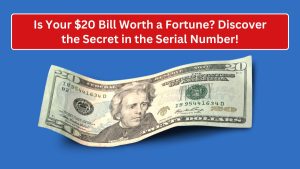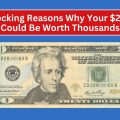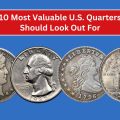Error coins can turn into valuable collector’s items due to their unique mistakes during minting. These rare anomalies create coins with unusual features, driving demand and price.
From die clashes to mule errors, some coins minted in the 2000s have gained significant worth, with collectors willing to pay thousands of dollars for these errors. In this article, we explore five error coins from the 2000s that are now worth a fortune.
5 Rare Error Coins from the 2000s Worth a Fortune
1. 2000-P Sacagawea Dollar Mule Error
The 2000-P Sacagawea Dollar mule error is one of the rarest and most valuable error coins of the 2000s. This coin was mistakenly struck using the obverse die of a Washington Quarter and the reverse die of the Sacagawea Dollar.
The result is a coin with mismatched designs, creating a unique hybrid that has captured the interest of collectors worldwide.
Only around 20 of these coins are known to exist, and they can fetch up to $100,000 at auction due to their extreme rarity.
Value: $50,000 – $100,000
Known examples: ~20
Cause of error: Mismatched dies (mule error)
2. 2000-P Maryland State Quarter – Extra Leaf
This quarter, part of the U.S. Mint’s state quarter program, features an error on the reverse side. A die gouge resulted in an additional leaf appearing near the base of the Maryland terrapin design. This small yet significant error has made the coin highly valuable, with collectors willing to pay thousands of dollars for a pristine example.
Value: $500 – $3,000 (depending on condition)
Known examples: Low mintage
Cause of error: Die gouge
3. 2000-P South Carolina State Quarter – Die Break
The South Carolina State Quarter from 2000 also has an error known as a die break. This flaw occurred near the palmetto tree on the reverse side, resulting in a visible crack in the design. The rarity of this quarter and the distinctiveness of the error have made it a sought-after piece in the coin-collecting community.
Value: $700 – $2,000
Known examples: Limited
Cause of error: Die break
4. 2000-D New Hampshire State Quarter – Mule Error
Another significant error from the 2000s is the 2000-D New Hampshire State Quarter, which features a mule error. This quarter was mistakenly struck with the reverse die of the Massachusetts State Quarter. Mule errors are extremely rare, and this one is no exception, making it a highly prized item for collectors.
Value: $3,000 – $7,000
Known examples: Very rare
Cause of error: Mismatched reverse die
5. 2000-P Virginia State Quarter – Spitting Horse Error
The Virginia State Quarter from 2000 has an unusual error known as the “spitting horse” variety. This error occurred due to a die clash, which caused a streak of metal to appear near the horse’s mouth on the reverse side, giving the illusion that the horse is spitting. This error has garnered attention from collectors due to its distinctive appearance.
Value: $500 – $1,500
Known examples: Low
Cause of error: Die clash
Rare Error Coins from the 2000s
| Coin Type | Error Type | Value Range ($) | Cause of Error | Known Examples |
|---|---|---|---|---|
| 2000-P Sacagawea Dollar Mule Error | Mule Error | 50,000 – 100,000 | Mismatched dies | ~20 |
| 2000-P Maryland State Quarter | Extra Leaf | 500 – 3,000 | Die gouge | Limited |
| 2000-P South Carolina State Quarter | Die Break | 700 – 2,000 | Die break | Low |
| 2000-D New Hampshire State Quarter | Mule Error | 3,000 – 7,000 | Mismatched reverse die | Very rare |
| 2000-P Virginia State Quarter | Spitting Horse | 500 – 1,500 | Die clash | Low |
Conclusion
Error coins from the 2000s, such as the Sacagawea Dollar mule and state quarters with design anomalies, have become highly prized by collectors.
These coins’ unique errors, combined with their rarity, make them worth far more than their face value. If you happen to come across one of these rare coins in your collection, you may be holding a valuable piece of numismatic history.
FAQs
1. What makes error coins so valuable?
Error coins are valuable due to their rarity and uniqueness. Collectors prize these coins for their unusual features, and the more distinct and rare the error, the higher the value.
2. How do I know if I have an error coin?
Look for abnormalities such as missing details, double images, or mismatched designs. If you suspect you have an error coin, you should have it appraised by a professional to determine its authenticity and value.
3. Are all error coins valuable?
Not all error coins are valuable. The value of an error coin depends on the type of error, the coin’s rarity, and the demand among collectors.
4. Can I find error coins in circulation?
Yes, error coins can still be found in circulation, although they are rare. Checking your change or going through rolls of coins can sometimes yield these valuable treasures.
5. Where can I sell an error coin?
Error coins can be sold through coin dealers, at auctions, or via online platforms specializing in rare coins.
References
- Hill Country Weekly, “5 Rare Quarters from the Year 2000 That Could Now Be Worth a Fortune”
- CoinWeek, “Five Mint Error Coins Collectors Still Search For Today”
- ICRE Roosevelt, “Top 7 Valuable Error Coins from the 2000s”
- Blanchard Gold, “Top Mint Errors and Their Values”
